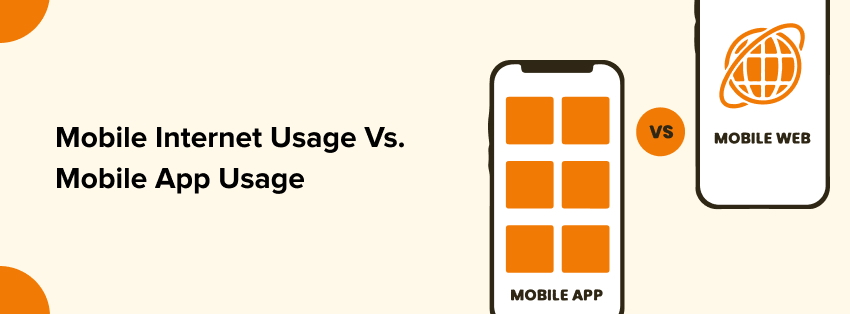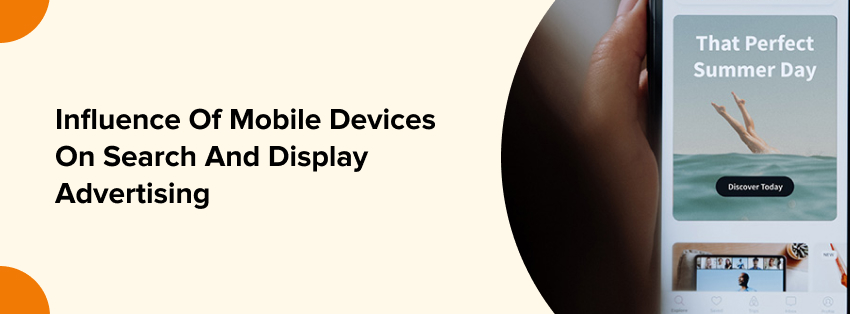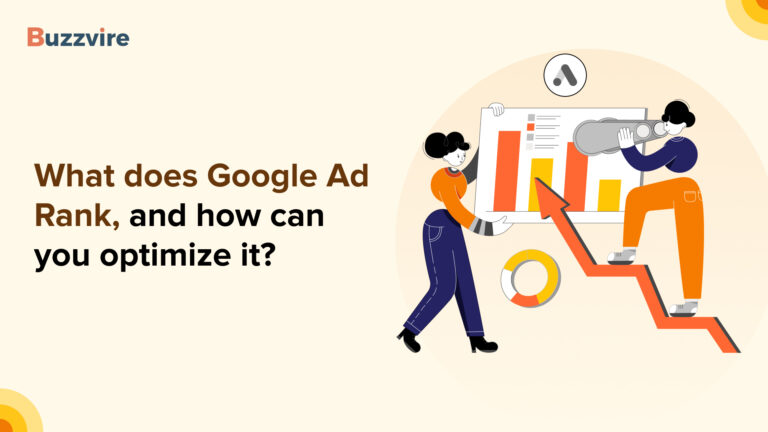
As of June 2021, the estimated 6 billion smartphone users have already been exceeded, according to Statista. However, projections for 2026 show that the figure is rising to over 8 billion. This indicates that people’s use of mobile devices will continue to expand.
Source:- statista.com
Likewise, in the modern age of digital marketing, mobile technology is becoming more vital. Because of customers’ growing dependence on mobile Internet, businesses should reevaluate their approach to mobile marketing. As revealed by this statistic, those who are yet to begin are missing out on a massive opportunity for growth.
We’d tell you that mobile marketing is the wave of the future, but the future is now. You’re already falling behind the competition if you still need to adopt a mobile marketing plan for paid marketing.
The accompanying image shows that people nowadays spend more time on their mobile devices than ever. This tendency will likely accelerate in the next few years, so gear up for that.
Image source:- financesonline.com
Key Statistics and Trends in the Mobile Industry
This is the era of mobile marketing, and your company needs one as much as you need a computer and internet connectivity. If you stroll through a large city, you’ll see more than a few people with their eyes glued to their phones. Recent studies show that mobile devices now account for 40% of all internet use; thus, ignoring this trend would be foolish.
Here are a few more fascinating facts about mobile marketing:
- Games account for the most significant percentage of app time spent, accounting for as much as 80% of all app time spent on mobile devices.
- Compared to smartphones, tablet computers are used to view 70% more online pages.
- Tablets have a 2.2% retail conversion rate, much more significant than smartphones’ 0.7% conversion rate, but classic PCs still have the most remarkable conversion rate at 3.3%.
- 2012 mobile search volume surged by 200 percent over the past few years.
The rise of mobile devices is inevitable and, if predictions hold, will shortly surpass that of desktop computers. There is no time like now to begin developing a mobile marketing plan.
Comparison of Mobile and Desktop Internet Use
- There were 49.78% more visitors from mobile devices than from desktop computers.
- In only a year, mobile users became 5% of the total.
- 25% of all digital media is consumed on social networks, most accessible through mobile devices.
- In 2022, adults in the United States used their phones for 5.5 hours daily.
- 60.66% more traffic to websites has been recorded from mobile devices in 2022 than from desktop computers and tablets combined.
- In 2021, mobile devices were used for 55% of all website visits.
- In addition, mobile devices account for more than 50% of all video views.
- CPCs on mobile devices are 24% less than desktops and get 40% more clicks.
Mobile app engagement rates are more significant than mobile-optimized websites or desktop web surfing.
Mobile Internet Usage vs. Mobile App Usage

Apps easily outperform mobile web pages in terms of the average time spent.
The adoption of mobile applications is rapidly outperforming that of mobile web browsers. In 2020, eMarketer predicted the average smartphone user would spend 4 hours online daily. Apps, not websites, account for 88% of that time.
This is due to a mobile app’s superior user experience, which is optimized for usage on portable devices.
The native app experience is often smoother and quicker than a similar online experience, and apps give a direct entry point from the home screen of a mobile device, as stated by eMarketer lead analyst Cathy Boyle.
Global mobile ad spending trends
Advertising tailored to mobile phones and other portable device users is known as “mobile advertising.” This industry is anticipated to expand internationally in the next few years. In 2019, global spending on mobile advertising reached over $234 billion. This sum is predicted to reach $495 billion by 2024. Mobile app and mobile website ads are also possible. Stastia projected that by 2020, mobile in-app advertising would generate over $117 million in revenue for the sector.
Image source:- statista.com
In 2018, mobile advertising budgets emerged larger than TV budgets for the first time. eMarketer’s forecasts, data, and statistics include:
- Estimates for mobile ad spending per person per hour.
- Ad revenues by company.
- Growth and share by format (mobile banner, mobile display, mobile messaging, mobile search, mobile video).
Ad expenditures on mobile devices are monitored globally and further broken down by continent and region.
The Mobile Experience and Its Importance in Paid Marketing

Mobile marketing helps all organizations. These benefits will be even more substantial in 2023. Reaching customers through their phones promotes relevance and timeliness. Mobile devices produce the most online traffic, making them the quickest method to get buyers.
Mobile marketing also reaches a worldwide audience. Businesses may target specific demographics via mobile phones owned by billions. Mobile websites, applications, SMS, QR codes, and in-app advertisements increase reach and engagement.
Mobile vs. desktop user behavior
46% of 8 billion mobile devices were smartphones in 2016. By 2021, 11.6 billion were expected. Mobile search is rising, but desktop search is not. Users choose devices depending on their search goals. Desktop searches employ broader queries, whereas mobile searches use location-based queries. Due to mobility, mobile users ask more questions than desktop users.
The duration of user engagement varies depending on the device. For example, desktop users are more active during work hours, whereas mobile users interact in the morning and night— younger people prefer mobile devices. While the majority of mobile shoppers still use their computers to complete their purchases, more and more people are choosing to do it on the go.
You can use various gadgets at different phases of the purchasing process. For instance, mobile devices are useful for preliminary research. On the other hand, desktop computers are best for thorough product descriptions and purchasing. The volume and kind of information customers get are affected by their devices. Also, desktops provide a bigger screen for seeing extensive data, but mobile devices have limits. Due to distractions with mobile devices, consumers are more likely to recall relevant information from desktops.
Tips for optimizing mobile user experience

- Responsive Design: An essential prerequisite for mobile optimization, your website’s responsive layout adjusts to the size of the device seeing it, whether it’s a desktop, tablet, or smartphone. This optimizes your website for user experience, paving the way for improved visibility and conversion rates.
- Page Loading Speed: Mobile consumers are more likely to quit a slow-loading website. Therefore, optimizing for speed should be a priority. Compressing pictures, minifying code, and utilizing a stable host can be effective steps in that direction.
- Mobile Navigation: Ensure visitors can easily access all your pages using your navigation menu. This reduces bounce rates and keeps visitors on your site. The sites need effective navigation bars.
- Mobile-Friendly Content: Optimizing your website design and content is crucial. This involves using bigger fonts, more whitespace, and eliminating Flash or other plugins that may not work on mobile screens.
- Testing and Optimization: Finally, tune your mobile website often to guarantee optimal performance. Track user behavior using Google Analytics and heat mapping technologies to improve. Tracking user bounces and dwell times is also a priority.
Mobile-First Advertising Strategies and Best Practices
When you focus on mobile consumers first, you can optimize your marketing content, methods of contact, and overall strategy for mobile devices. Content marketing to mobile devices must be distinct from desktop messages and adapted for smaller displays to be successful.
Follow Platform Best PracticesMobile-first advertising advantages and tips
Marketers in the United States are beginning to understand the importance of mobile marketing as smartphone ownership rises among the general public. The Wall Street Journal says that in 2016, mobile advertising spending reached an astounding $36.6 billion, up an impressive 77% over the previous year.
- Use More Visuals: AMP sites improve Google search ranks. These sites include less content, bigger fonts, clean pictures, and basic functionality. Prioritize visual content for clear conversion objectives.
- In a mobile-dominated era, build advertising that grabs attention within three seconds. Maximizing these minutes is vital as people scroll or tap through adverts in seconds.
- Optimize for Mobile: Responsive websites are not enough. Mobile-optimized websites increase conversion rates and ROI. Needless to say, mobile-optimizing your content can be highly advantageous.
- Consider Context: Since most ad exposure happens on the go, adjust your digital ad spend plan to target specific settings, such as location and modality. Recognize that your audience may see your adverts while commuting or in the restroom.
- Stay Informed: Explore digital advertising choices and test for the best ones. Social media targeting is accurate, and Google and Facebook are expected to dominate ad expenditure.
- Emphasize Video: A mobile video strategy is essential as YouTube and social media users consume more video material. Mobile video’s popularity can be explored to great lengths.
- Google Analytics Data: Explore website traffic sources. Use social advertising, Google AdWords, and industry website advertisements or sponsored content to target these channels.
- Let Social Media Lead: Think mobile first on social media, including format (vertical vs. horizontal) and mobile-specific possibilities like Facebook 360—Front Load messages in videos over 12 seconds.
- Optimize Speed: Mobile devices have limited bandwidth and time, prioritizing rapid online experiences. Avoid irritating consumers by putting the most relevant information upfront.
- Follow Platform Best Practices: Optimize content for mobile platforms. To increase Facebook video views in a congested feed, make the opening three seconds captivating. Use sound-off surroundings and vertical video.
- Adapt to the Mobile Experience: Mobile is not simply a gadget but a new user experience. Replace banner advertisements with relevant, socially focused digital advertising.
- Know the Mobile Customer: Study mobile clients’ search and purchase habits. Identify mobile search occasions and develop a solid plan to target this market demographic.
- Understand Mobile User Contexts: Mobile users have distinct goals from desktop users. Depending on location and conditions, contextual targeting, including geo-fencing and weather and time considerations, may grab mobile user attention.
Mobile Impact on Search and Display Advertising

We all know that the rise of mobile has impacted search and display advertising. The effects on each are as follows:
Search Ads:
- Smartphones dominate internet searches. Advertisers must optimize search advertisements for mobile since mobile search traffic has exceeded desktop search.
- Local Intent: Mobile searches generally target neighboring businesses or services. Location-based targeting and local search query optimization may benefit advertisers.
- Click-to-contact and Click-to-Map: Mobile search advertising typically enables consumers to contact a company or receive directions. This improves user experience and helps marketers convert offline.
- Voice Search: Voice assistants and voice search have made mobile optimization for search ads more critical. Advertisers must optimize for voice inquiries and use long-tail keywords that match natural language search trends.
Display Ads:
- Display advertisements must be mobile-first. Ads on mobile devices should be brief, attractive, and fast-loading. Responsive and adaptable designs are necessary for a compelling presentation on multiple screen sizes.
- Display Advertising: Advertisers may target highly engaged app category users using user data. Banners, interstitials, native advertisements, and videos are in-app ads.
- Mobile video advertising: It has grown due to mobile video usage. Mobile video Ads benefit from better engagement and viewability.
- Location-Based Targeting: Mobile devices’ accurate location monitoring allows marketers to serve advertising based on a user’s real-time location. This allows geo-fencing and location-based targeting of adverts.
- Cross-Device Targeting: Tablets, desktops, and mobile devices are typically connected. Cross-device targeting lets advertisers ensure consistent messages and reach across devices.
- Mobile has radically changed the way search and display advertising functions. Advertisers must emphasize mobile optimization, adapt their tactics to the mobile user experience, and harness mobile devices’ unique capabilities to reach and engage their target audience.
Future of Mobile in Paid Marketing Strategies
Paid mobile marketing has come a long way and will continue to play a significant part in the advertising industry. Marketers need to emphasize mobile optimization and adjust their tactics to meet the needs of mobile customers as mobile use continues to rise.
This involves using tools like AR, VR, and AI to provide unique and engaging encounters. Mobile payments, location-based targeting, and advanced monitoring capabilities will further improve targeting and measurement.
Furthermore, new chances for marketers to efficiently reach their target audience will emerge when mobile is integrated with other channels, such as social media and voice search. Successful future paid marketing tactics will need the use of these innovations.
FAQs
Due to the proliferation of mobile devices, paid advertising now prioritizes mobile-friendly features such as responsive layouts and location-based services.
Screen size, user behavior, ad placement, the necessity for adaptable design, and shorter ad content on mobile are all factors that separate mobile and desktop paid marketing campaigns.
Third, when designing advertising for mobile devices, it’s essential to keep things simple, use visuals, minimize loading times, and use mobile-specific ad formats like vertical videos and interactive ads.
Mobile advertisements often include shorter text and fewer visual elements because of the smaller size of mobile devices’ screens. Tap-to-call functionality and geotargeting are two examples of mobile-specific capabilities you might include.
Employing responsive design, testing advertisements on several screen sizes, using captivating images, and concentrating on brief and attention-grabbing text are all ways to optimize advertising for mobile devices and increase their exposure and interaction.
Click-through rates (CTRs), conversion rates, app installations, app engagement, mobile bounce rates, and return on ad spend (ROAS) are some of the most important metrics to analyze when evaluating the performance of mobile advertising campaigns.
Targeting choices for mobile advertisements vary from desktop advertisements in location-based targeting, mobile app targeting, device targeting, and the capacity to use mobile-specific data like GPS or mobile ID for more exact targeting.








